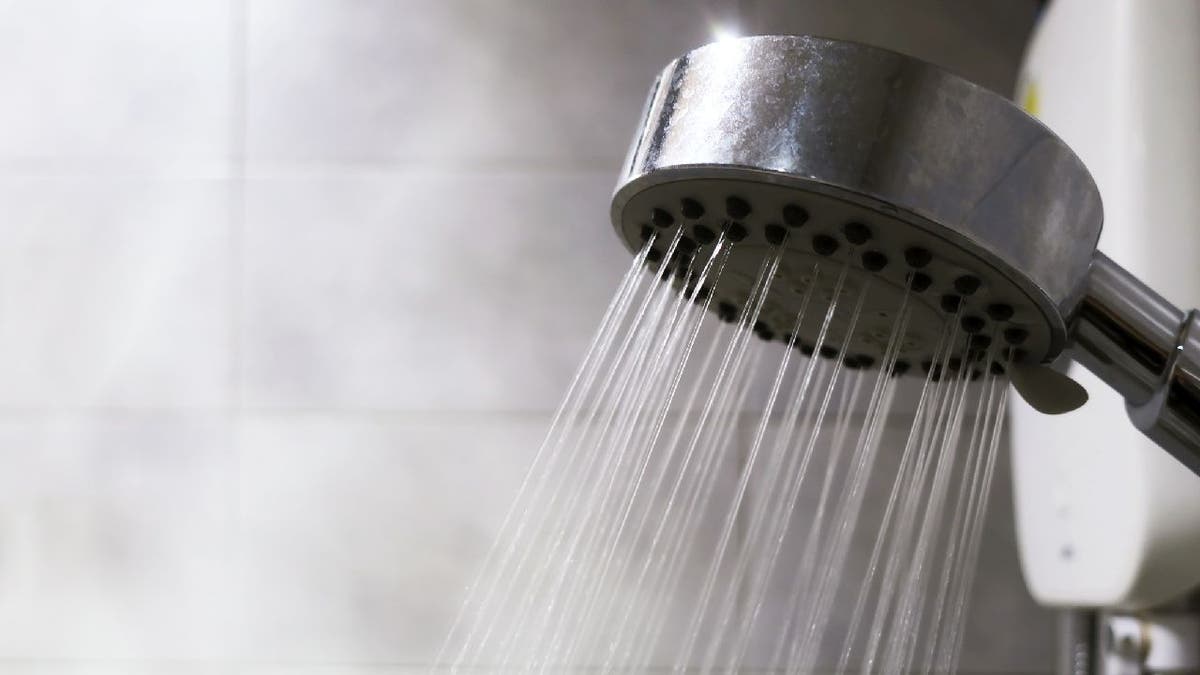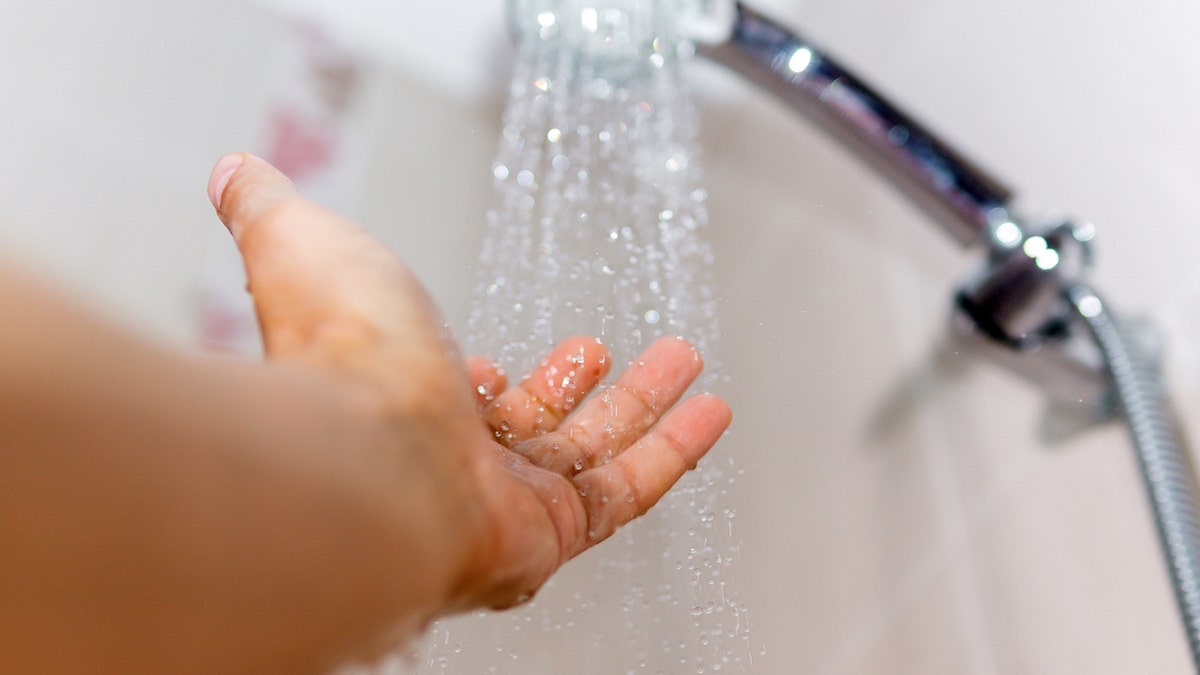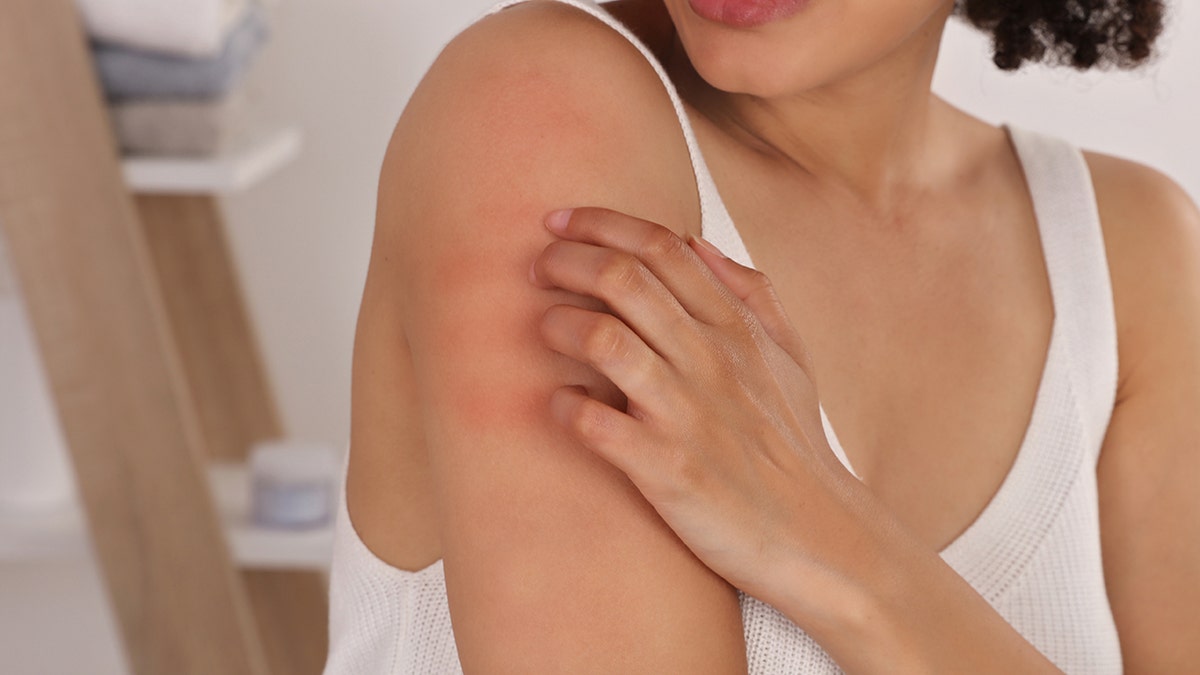Fox News Flash top headlines for October 10
Fox News Flash top headlines are here. Check out what's clicking on Foxnews.com.
Many people with chronic hives learn to avoid the common triggers that make their condition worse.
But what would you do if you were allergic to water?
That's a question that Tessa Hansen-Smith, 25, has to ask herself every day, as she contracts hives after any contact with water. Today, she's raising awareness about one of the rarest kind of allergies known as aquagenic urticaria, a condition in which people break out in hives after they come into contact with water.
ALLERGIC TO CATS? WHAT SUFFERERS SHOULD KNOW BEFORE BRINGING HOME A FELINE FRIEND
After she told students in college at University of California, Davis, about her diagnosis, some would deliberately splash water or hurl ice cubes at her because they didn’t believe her, according to a recent report.
She recently raised over $10,000 on her GoFundMe account to help pay her growing medical bills.

"There is ongoing medical care that’ll always be present in my life and the extra money above my goal will be contributing to that," wrote Hansen-Smith on social media about her rare allergy to water. (iStock)
"I’m so happy my hospital bill and stay are now behind me, but there is ongoing medical care that’ll always be present in my life and the extra money above my goal will be contributing to that," she wrote on Instagram about her situation.
Hansen-Smith was hospitalized during the pandemic when she became so dehydrated that part of her large intestine temporarily had decreased blood flow, causing a condition called ischemic colitis.
Her doctors first thought the culprit was soaps and shampoos in the shower — but the condition persisted.
"I’m always dehydrated and prone to fainting," she lamented on social media.
Fox News Digital reached out to the Hansen-Smith family for comment.
More triggers and reactions over time
When she was 8, Hansen-Smith started noticing raised rashes on her arms and also cuts on her scalp, she shared on her social media accounts.
Her doctors at first thought the culprit was soaps and shampoos in the shower — but the condition persisted.

Tessa Hansen-Smith's family noticed that her hives were triggered by pools, as well as by showers that she took at home — and also at hotels in different towns. As she grew, she developed more triggers and reactions. (iStock)
After two years of tests by multiple specialists, her mother, Dr. Karen Hansen-Smith, a family medicine physician, first put all her symptoms together to realize she had a water allergy, according to a recent report.
Her family noticed her hives were triggered by pools, as well as by showers that she took at home — and also at hotels in different towns.
As she grew up, she developed more triggers and reactions. Her eyes began to itch — and she developed cuts on her tongue and hives her mouth.
Can't drink non-dairy milk
"I’m allergic to all sources of water — this includes rain, tap, distilled, ocean, bottled, and even includes bodily fluids like sweat, tears and saliva," she posted recently on Instagram.
Drinks with a high-water content cause a burning sensation, she said, so dairy milk is reportedly the easiest for her to drink because the fat and protein content balances the water content.
If she doesn’t have access to milk throughout the day, she becomes so thirsty that she can’t resist chugging water — which can lead to fainting from the pain.
She can’t drink any non-dairy milk, such as almond milk, oat milk or any milk that isn’t from an animal.
‘TOP 8’ FOOD CHALLENGE — WHAT IT MEANS, PLUS EXPERTS' TIPS FOR NAVIGATING NUTRITIONAL NEEDS
But if she doesn’t have access to milk throughout the day, she becomes so thirsty that she can’t resist chugging water ± which can lead to fainting from the pain, she said previously.
Sticks to dry foods with minimal water content
She sticks to dry foods with minimal water content like granola bars, crackers, bread, peanut butter, potatoes, beans and dairy based soups.
She stays away from watermelon, cucumbers and celery.

Drinks with a high-water content cause a burning sensation for Hansen-Smith, so dairy milk is the easiest for her to drink because the fat and protein content balances the water content, according to a recent report. She can’t drink any non-dairy milk, such as almond milk or oat milk — or any milk that isn’t from an animal. (iStock)
She eats fruits approximately once a week — usually dried apricots, dried cranberries or sometimes a small serving of green apples or strawberries.
She tolerates some foods with high water content, like strawberries, because they have more sugar in them — but she still takes precautions when eating them.
Working hard to stay clean
"Showers take a lot out of me already, but over the past year they’ve become an impossible hurdle to jump," she posted recently.
"So standing in a shower for more than five minutes, while also trying to not pass out as I hyperventilate while there’s water hitting me, is not a relaxing self-care experience like it can be for others," she added.
She limits her activities — she can't engage in activities that cause her to sweat too much.
She also said, "Believe me, I’m doing more than enough to be clean enough that no one notices — I haven’t had a proper shower in over a year-and-a-half."
She said she minimizes body odor issues "by shaving and using deodorant where appropriate."
But she limits her activities because she can’t get too dirty or engage in activities that cause her to sweat too much, since she rarely washes her entire body completely, she told others on social media.
What is urticaria?
Hives cause bumps and/or raised patches on the skin that appear suddenly, according to the American Academy of Dermatology Association (AAD).
Urticaria is the medical term for hives.

Hives generally resolve within one day, but they can reappear either on the same area or different parts on the skin. (iStock)
Hives generally resolve within one day, but they can reappear either on the same area or different parts on the skin.
People with hives generally get new rashes for a few days to a few weeks, but when they persist for six weeks or longer, they are termed chronic hives, per AAD.
"Aquagenic urticaria is a variant of physical urticaria," Alison Ehrlich, M.D., a dermatologist in private practice at Foxhall Dermatology and Research Center based in Washington, D.C., told Fox News Digital.
People with hives generally get new rashes for a few days to a few weeks, but when they persist for six weeks or longer, they are termed chronic hives.
People with the condition develop hives after exposure specifically to water, sweat, and tears, she explained.
CLICK HERE TO SIGN UP FOR OUR LIFESTYLE NEWSLETTER
"These itchy lesions generally appear within 20 to 30 minutes after exposure to water," she added.
"Diagnosis should be confirmed by a physician as other forms of physical urticaria can be triggered by exposure to water at different temperatures or salinity."
CLICK HERE TO GET THE FOX NEWS APP
"There is no cure, there’s just management and medication, and also restriction and avoidance," Hansen-Smith recently explained on Instagram.
For more Lifestyle articles, visit www.foxnews.com/lifestyle.




















